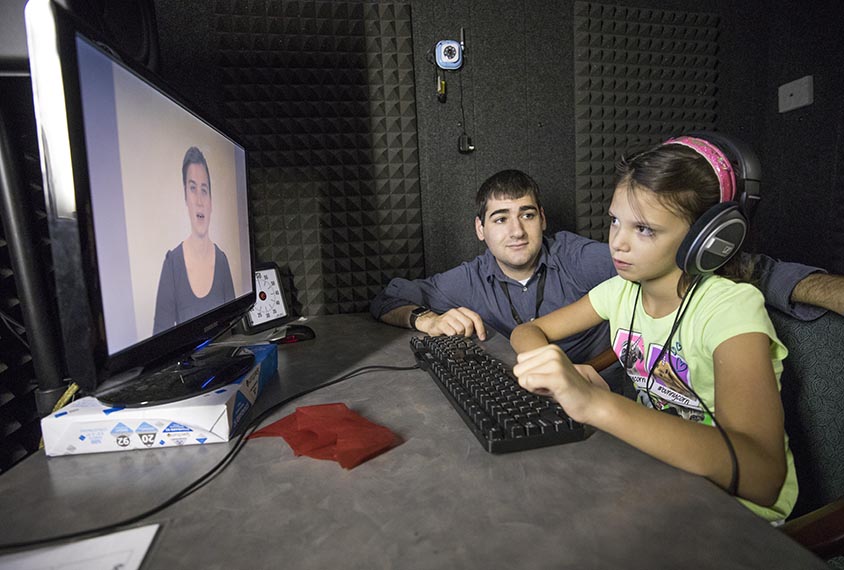
THIS ARTICLE IS MORE THAN FIVE YEARS OLD
This article is more than five years old. Autism research — and science in general — is constantly evolving, so older articles may contain information or theories that have been reevaluated since their original publication date.
A person’s ability to distinguish similar syllables by sight and sound correlates with how sensitive she is to sensory stimuli, according to unpublished results presented today at the 2017 Society for Neuroscience annual meeting in Washington, D.C.
The findings link laboratory measures of sensory function with clinical indicators of sensory sensitivity, such as parent questionnaires.
“We are measuring the same thing,” says Jacob Feldman, a graduate student in Tiffany Woynaroski’s lab at Vanderbilt University in Nashville, Tennessee, who presented the findings. “The clinical measures are tapping very similar things to the experimental tasks.”
The work could lead to strategies for easing the sensory difficulties of people with autism, he says. These difficulties come in three varieties: hypersensitivity, hyposensitivity and sensory seeking.
A hypersensitive individual may clamp his hands over his ears to block out the noise of an alarm clock. A hyposensitive person may not notice the alarm at all. A sensory seeker might put an ear right up to the clock.
Parent prescience:
In the new study, 18 school-age children with autism and 18 controls watched videos of a person pronouncing the syllables “ba,” “ga,” “da” and “tha.” The children sometimes watched the video with sound, at other times, they watched it without sound or heard the soundtrack only. They pressed a button on a keyboard to indicate which syllable they perceived.
Their parents filled out two questionnaires commonly used in the clinic to assess children’s sensory features and identify unusual sensory responses.
The researchers performed their analyses on the combined group of children with autism and controls. They found that children with fewer sensory abnormalities are more accurate at perceiving the syllables, whether while seeing the picture only, hearing the sound only or watching integrated video.
“The better they did, the fewer sensory abnormalities the parent endorsed,” Feldman says.
The relationship is especially strong among children who are insensitive to stimuli: the more hyporesponsive the children are, the worse they are at identifying the correct syllable.
Seeing syllables:
In some trials, the picture and the sound were mismatched: The video showed a person mouthing “ga” but the soundtrack played a person saying “ba.” This mismatch often leads people to perceive a syllable halfway between “ba” and “ga” — they ‘hear’ “da” or “tha.” This illusion is known as the McGurk effect.
The McGurk effect is a result of the brain’s robust ability to integrate information from multiple senses. In typical individuals, it is strongest when the audio and visual components are simultaneous and becomes weaker the more offset the stimuli are.
Research shows that people with autism are less likely to perceive the McGurk effect than controls when picture and sound co-occur but more likely to experience the illusion when the stimuli are significantly offset. This suggests that autism is accompanied by problems with audiovisual integration.
In the new study, the researchers found that hyporesponsive children are likely to perceive the McGurk effect over a broad window of time.
The results have implications for treatment, Feldman says. Training children on audiovisual integration might help ease their sensory issues.
They also suggest that deficits in connecting sounds with sights as measured in the lab are linked to children’s sensory sensitivity. This means there may be objective ways of sussing out what sensory stimuli are bothering a child. And for parents of less verbal children, that could be reassuring.
For more reports from the 2017 Society for Neuroscience annual meeting, please click here.
By joining the discussion, you agree to our privacy policy.